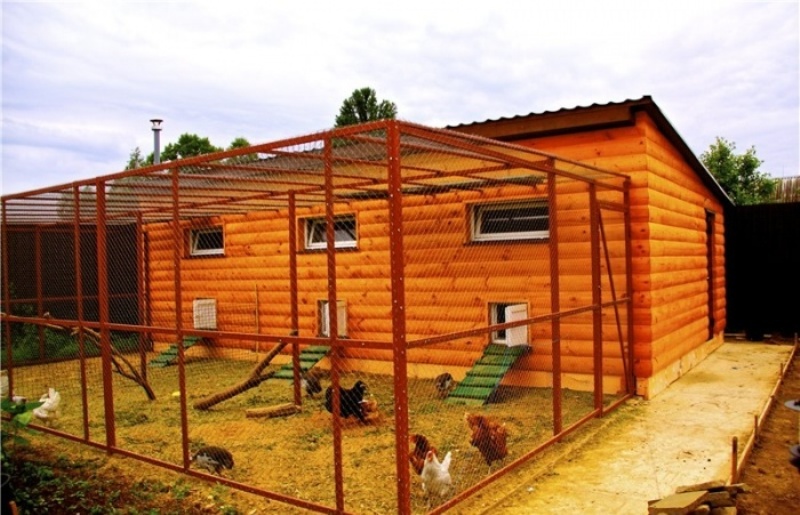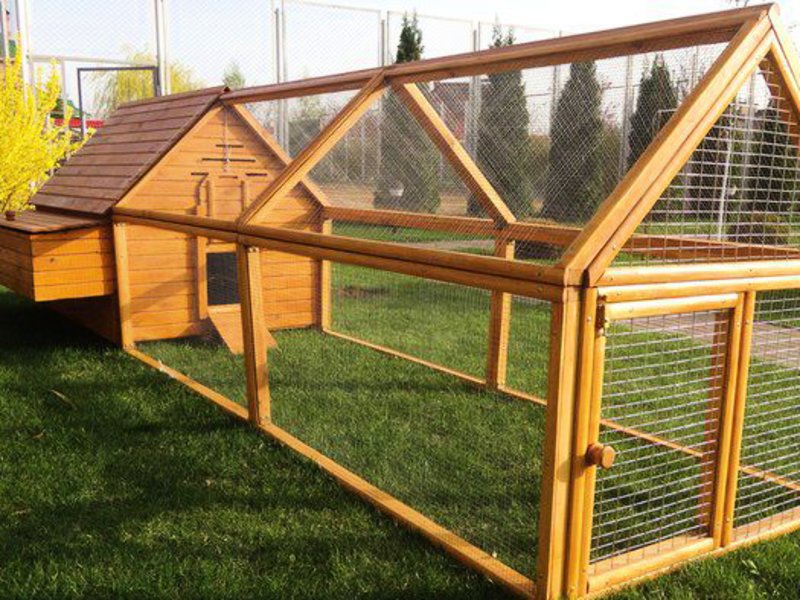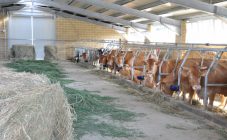Content:
Winter maintenance of chickens and chicks provides for the equipment of a special room in which the optimal temperature and light regime will be maintained. Arrangement of the building for winter maintenance should be started in the fall.
Conditions for winter keeping chickens
In order for the birds to successfully overwinter, they must be kept in a warm, disinfected structure, the nutritional conditions and the light regime must be observed.
If it is necessary to keep laying hens in winter, they should be provided with lighting for 14-18 hours a day. Most often, fluorescent lamps are used for these purposes. When used, energy costs are low.
If daylight enters the building, then it is necessary to additionally illuminate the room from 6 to 9 in the morning and from 5 to 8 in the evening.
Don't forget about food. The correct diet affects not only egg production, but also the general well-being of the bird during wintering. You need to take care of feed in the summer.
For good nutrition in the summer, herbs are harvested. To do this, dry nettle, clover, mouse peas. In winter, they are hung up so that the chickens can reach them.
A large share in the diet of chickens is occupied by cereals: barley, wheat, corn. You should also include vegetables in your diet: potatoes, carrots, pumpkin, zucchini and others. Apart from potatoes, all vegetables can be fed raw.
Warm rooms
If there is no ready-made chicken coop that you can simply insulate, you will have to build from scratch.
Winter chicken coop for 30 chickens
The size of the poultry house depends on the number of livestock. So, for 30 heads, 8 square meters will be enough. The calculation is as follows: 1 square meter can contain 4 laying hens and 3 broiler hens.
In order to reduce the cost of lighting and heating, when building a drawing, it is necessary to provide for window openings in sufficient quantity. In this case, the windows will have to be insulated.
In order to create optimal conditions for winter maintenance, a number of conditions are observed when building a chicken coop:
- The room must be on dry soil. The best option is a remote location with low noise levels.
- Have a rectangular shape and run from east to west.
- The windows are facing south.
- In order for the chickens to rush throughout the year, it must be dry, light and warm.
- The optimum temperature in the chicken coop is 12-20 degrees.
- Don't forget about ventilation.
After all the parameters have been taken into account, you can start designing a chicken coop for 30 chickens. For keeping 30 birds, 8 square meters is enough. If finances and sufficient territory allow, then you can increase the area of the chicken coop, taking into account the fact that in the future the livestock may increase.
First, equip the foundation. Moreover, during the construction of a winter building, the depth of the foundation is greater. Then the floor is laid. Chickens need a warm floor, so planks are the best option.
After that, the walls are erected. For construction, they use timber, cinder blocks, bricks, foam blocks. Then the matter was left behind.All outdoor work has come to an end. The time has come for internal work, which includes: installation of lighting, ventilation equipment, insulation and provision of additional heating in case of severe frosts, as well as the installation of nests, drinking bowls and feeders.
Coop for 50 chickens
If we take into account that no more than 4 chickens are placed on a square meter, then for 50 heads a room from 7 to 10 sq. m. clean. But do not forget that inside there will also be feeders and drinkers, as well as nests.
A do-it-yourself chicken coop for 50 winter chickens should be built taking into account several rules:
- Located away from residential buildings. This is due to the specific smell emanating from the chicken coop.
- Windows should be on the south side and doors on the east.
- Sunlight should be good during the day.
- Protected from the wind.
- The aviary should be insulated with a chain-link mesh.
- The humidity inside is 55-70%, the temperature is from 15 to 20 degrees.
- Equipped with ventilation.
- Internal hardware required.
- Daylight hours - at least 14 hours.
How to build a do-it-yourself chicken coop for 50 chickens? When developing a project, all of the above rules must be taken into account. On their basis, projects of chicken coops with sizes for 50 hens are drawn up. It is taken into account that the optimal room height is 1.8 m.
Coop for 100 chickens
To keep a large number of hens, an appropriate room is required - a hen house for 100 laying hens with a walk. And although the construction of a large-scale building is not much different from the construction of a chicken coop for 30 heads, a number of indicators, when developing a detailed scheme, still take into account:
- The size of the chicken coop is from 16 sq. m.
- Construction is being carried out in accordance with the drawing.
- The foundation can be monolithic, sloped or columnar.
- The height of the walls is no more than 2 m.
- Lighting, ventilation and interior equipment requirements are similar to those for small spaces, adjusted for dimensions.
Poultry tips
Experienced poultry farmers give their recommendations for keeping chickens in the winter:
- To avoid infection with worms, birds need to give chamomile decoction instead of water every month for 3 days in a row.
- The color of the lamps is very important. So, blue lamps have a calming effect on chickens, orange - stimulates reproductive function, green - promotes growth, with a dull red, chickens will not peck eggs.
- In order for the hens to rush in the winter, it is necessary not only to maintain lighting for 14 hours, but also to provide the layers with the correct diet, in which there should be greens.
- Be sure to provide the chicken with chalk.
- The water should be warm.
Following all the advice of experienced poultry farmers together and keeping poultry in a specially equipped room will allow you to get eggs even in winter.














